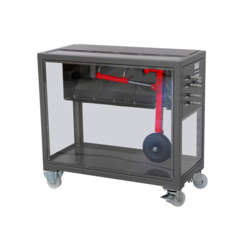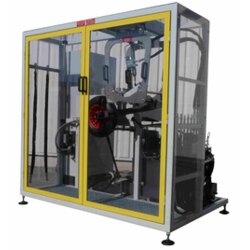Aviation Maintenance Training Equipment
Sort by
Learn about Aviation Maintenance Training Equipment
For an aircraft to operate safely it needs to regularly undergo maintenance. Such aviation maintenance includes overhaul, inspection, and repairing or replacing parts or systems.
In the following sections we will cover the most important topics related to aviation maintenance work, training, tools, systems, and equipment.
Aviation Maintenance Regulation
Firstly, any aviation maintenance is heavily regulated to certify the safety of crew and passengers. The International Civil Aviation Organization (ICAO) is responsible for coordinating international standards that are then implemented and monitored by local authorities in every country.
Maintenance staff must be licensed for any tasks they carry out and there are different levels of licenses and certifications, across different countries in the world.
In USA maintenance personnel can have licenses such as Aircraft Maintenance Engineer, Aircraft Maintenance Technician, or an Aircraft Maintenance Mechanic. In Europe there are four different levels of authorization, covered by the European Aviation Safety Agency (EASA).
Types of Aviation Maintenance Training Equipment
Aircraft maintenance training equipment is always delivered as a combination of hardware, software, and content. These systems are meant to give students a hands-on and realistic experience of working with near industrial technology. Most tools focus the learning on diagnostics and fault finding, trouble shooting, repair and maintenance.
There are different types of training equipment, tools and systems depending on which type of skills a certain student is training for, and what type of certification or license they will receive.
- Generic or Basic skills trainers: mostly focusing on riveting, fasteners, security bolts etc. but also include basic avionics, wiring and cable, basic piping and basic hydraulics.
- Cabin Management training equipment: mostly focusing on safety aspects such as communication systems, cabin pressure, oxygen system, fire detection etc.
- Avionics and Instrumentation training equipment: mostly focusing on cockpit instrumentation, navigation and communication, avionics and wiring etc.
- Aeronautical Hydraulic training equipment: mostly focusing on the maintenance of landing gear, anti-skid and auto brake systems, wing-flaps, ground hydraulic power units etc.
- Powerplant and Engine training Equipment: mostly focusing on piston engines, mini turbines, fuel system and cutaway engines etc.
If you do not find what you are looking for in our list of products above, then do not hesitate to reach out to us, we can help you locate a producer for any type of aircraft maintenance training equipment.
Benefits of Aviation Maintenance Training Equipment
There are various benefits for using hands-on equipment training equipment, especially for skills such as those necessary in aircraft maintenance.
Primarily, content retainment of course material is proven to be better when students both learn theoretically and practically with hands-on training systems.
Students also pay better attention and show increased engagement when they get ownership of their own learning experience.
Critical thinking is closely related to practical teaching since students need to decide what to do next in any given scenario, rather than memorizing information for an exam.
Students also normally have access to an experienced instructor who has real world experience, which decreases any transitioning concerns from education to work.
Finally, learning how to work with hands-on equipment early in a career increases safety and decreases workplace accidents later in the career.
Aviation Maintenance Workforce Demand
Maintenance is mainly scheduled so that different parts and systems of an aircraft gets routinely checked after they have been operational for a certain amount of flight hours or take-offs and landings.
Work is coordinated to minimize the time an aircraft is out of service and to maximize the usage of maintenance facilities.
Aviation maintenance can also be unscheduled, which is when an aircraft “goes tech”. This happens when an aircraft upon a flight safety check by the pilots show technical problems.

